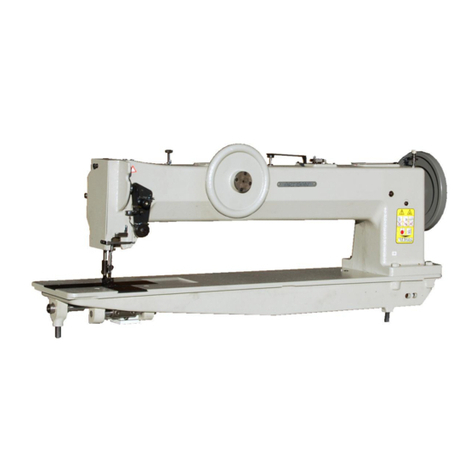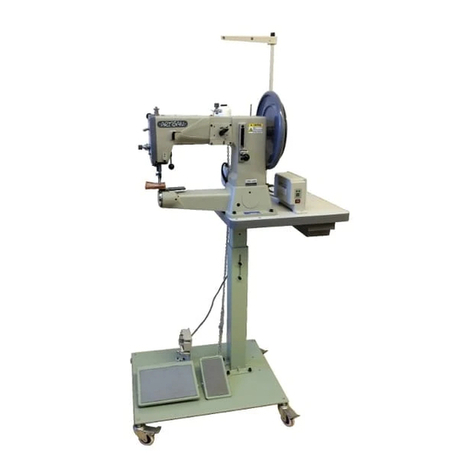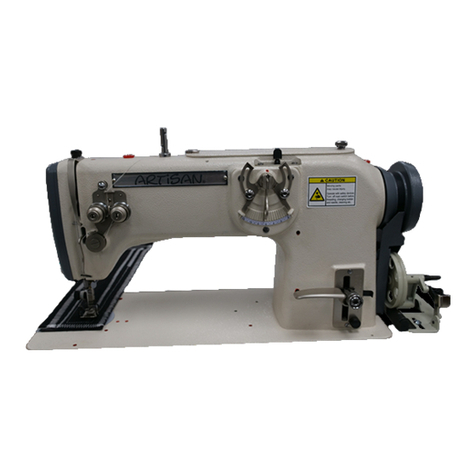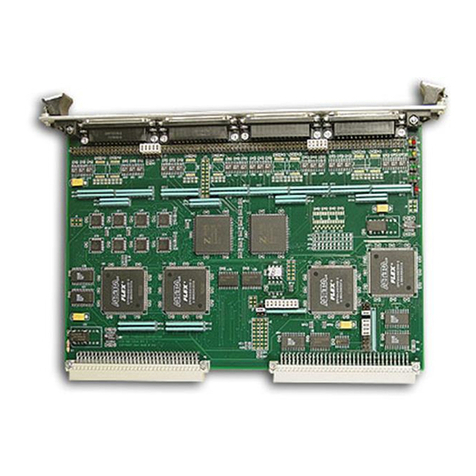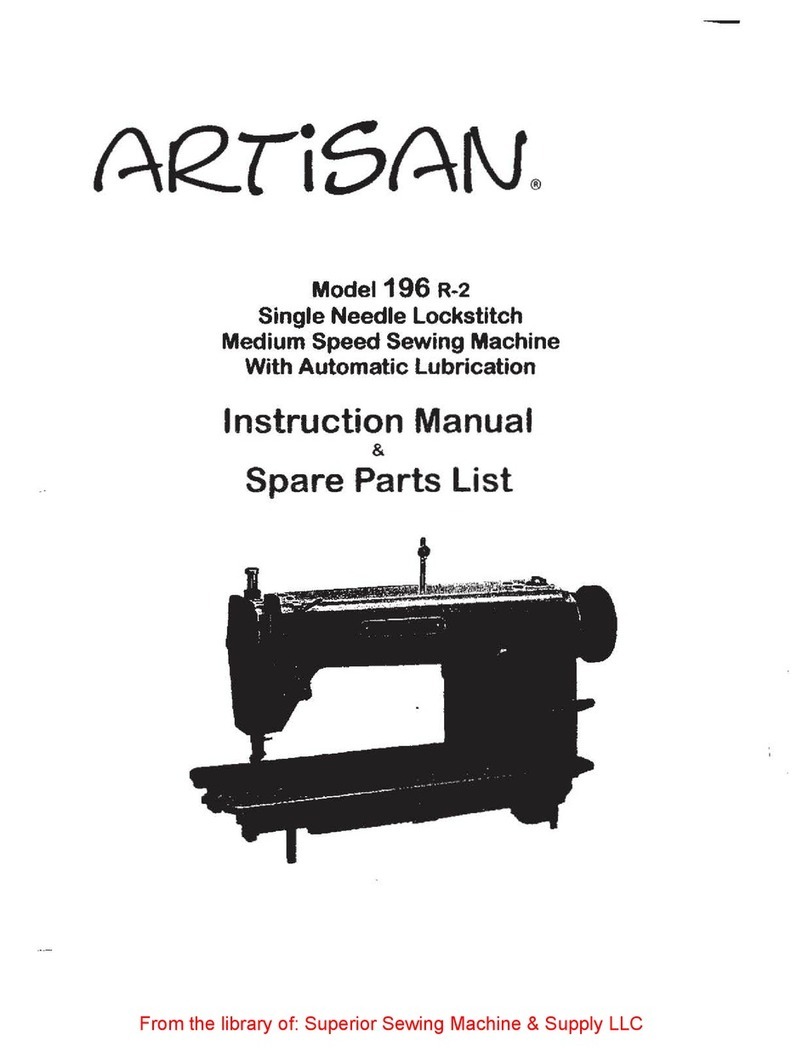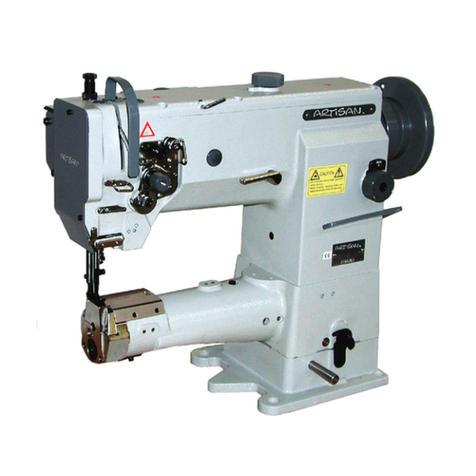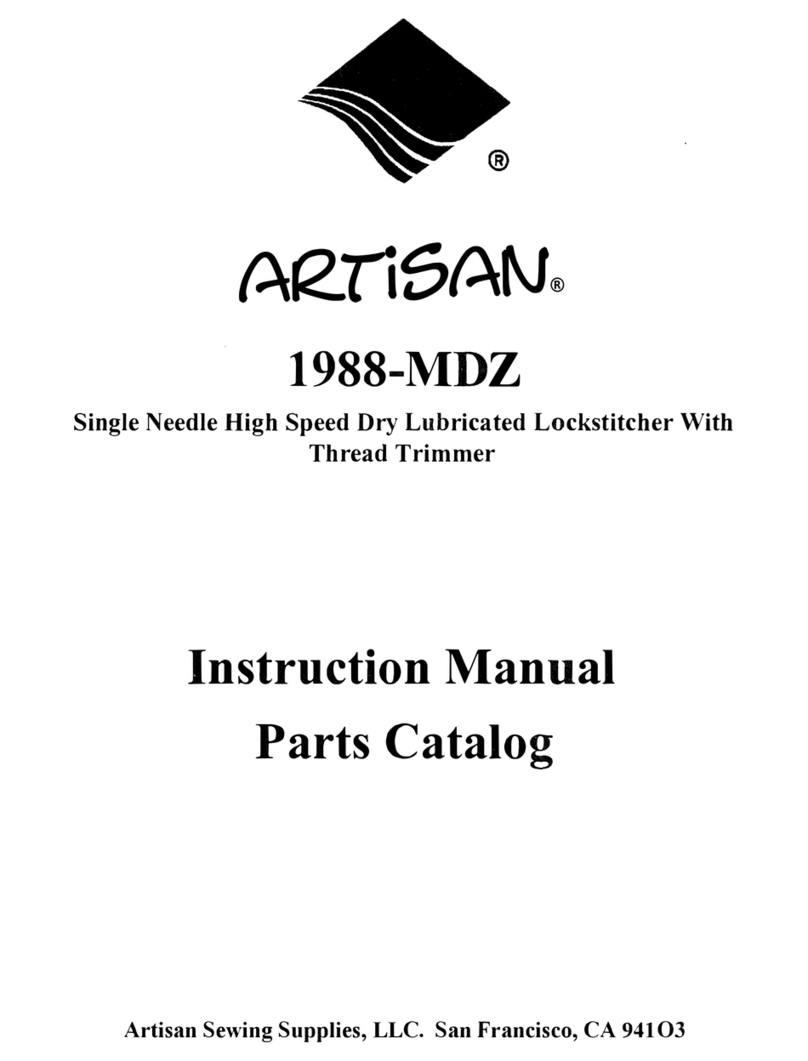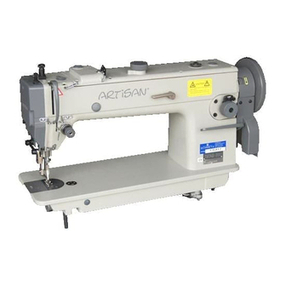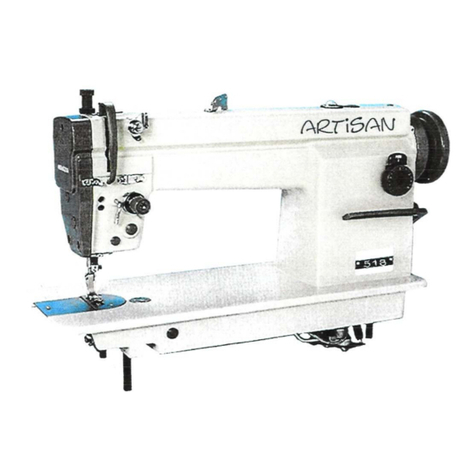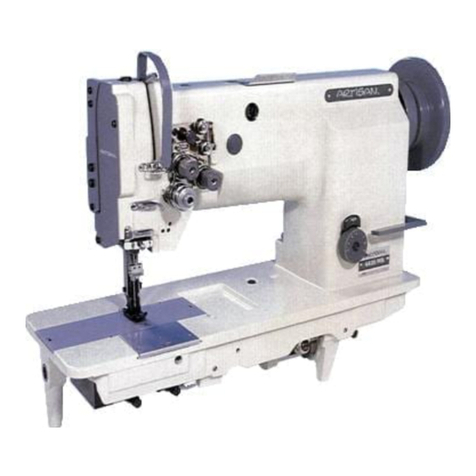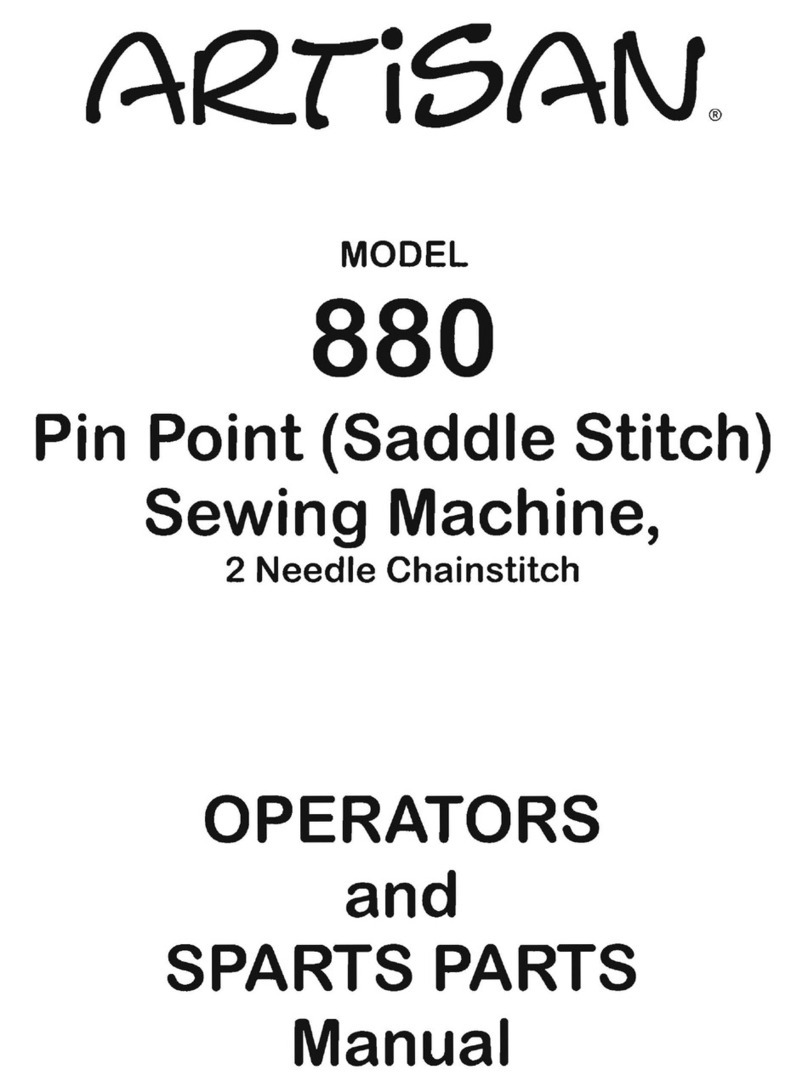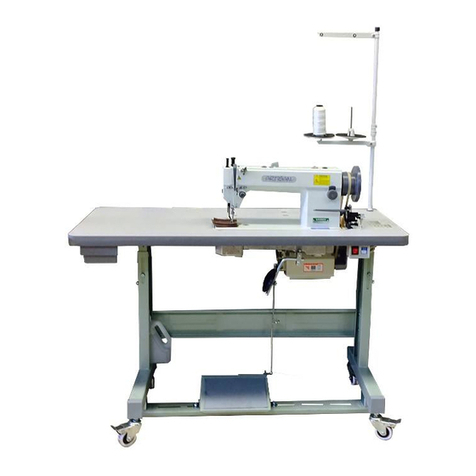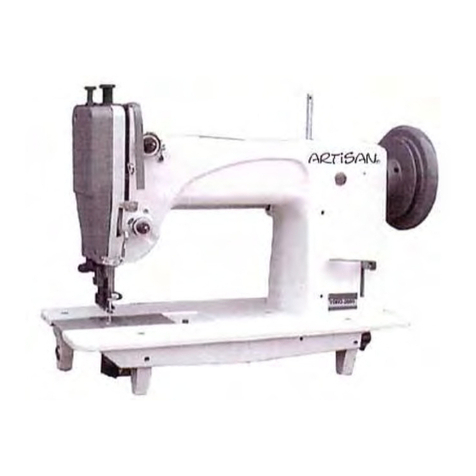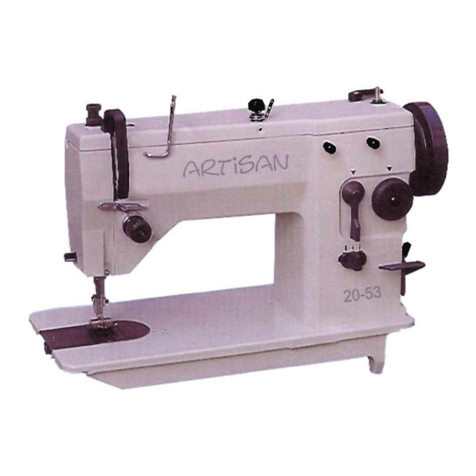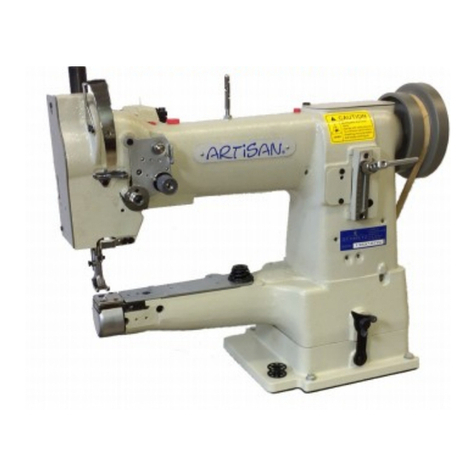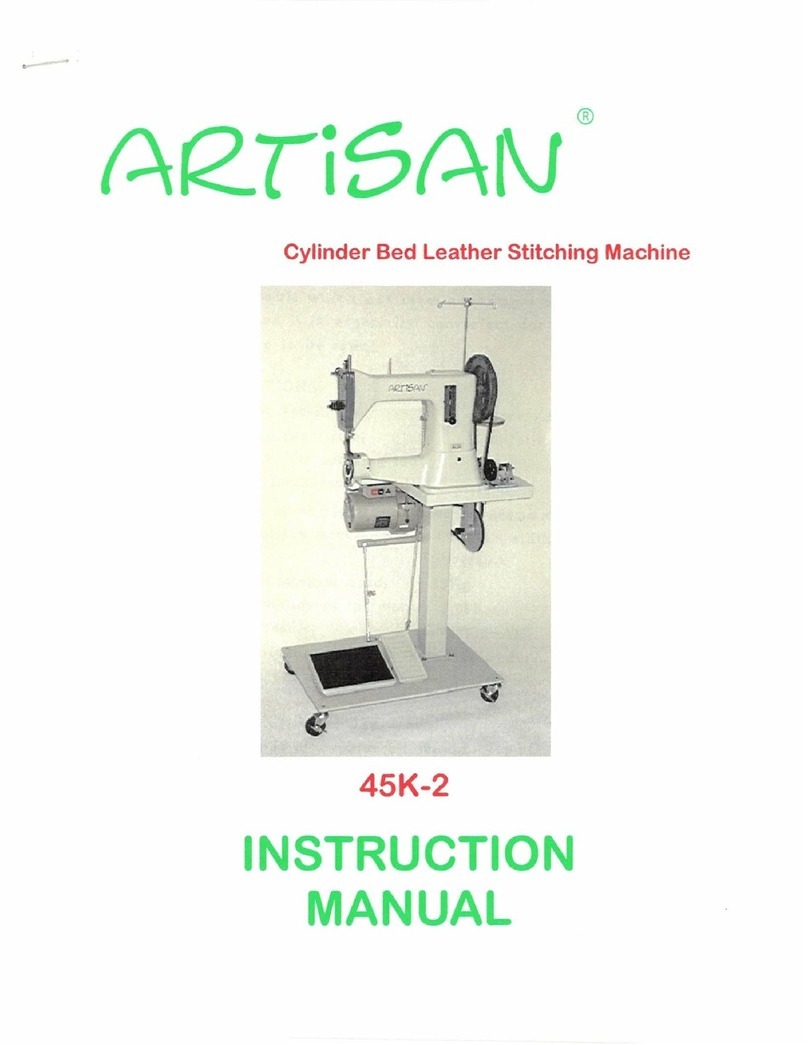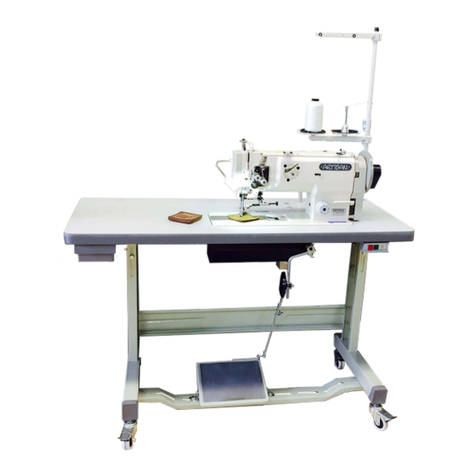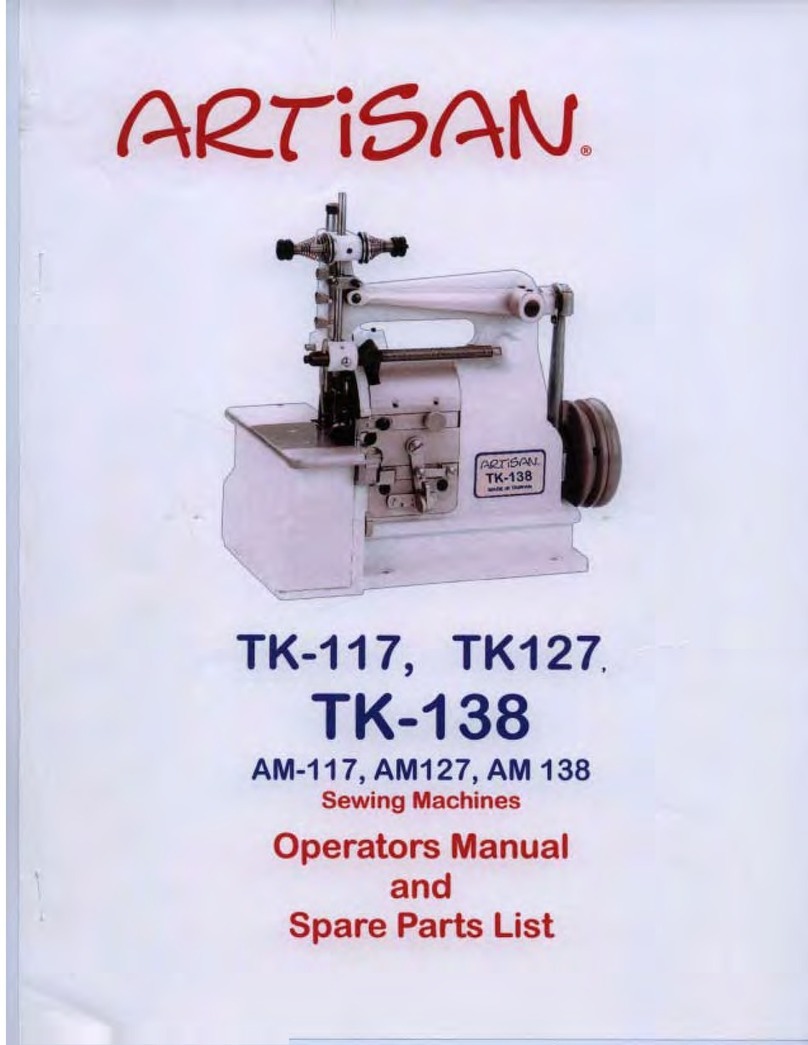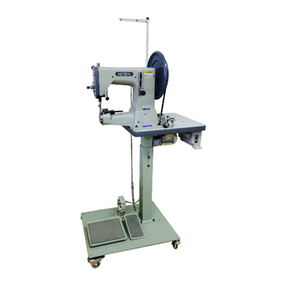----- CONTENTS -----
INSTRUCTION MANUAL
1. PRECAUTIONS BEFORE STARTING OPERATION ········································································1
2. SPECIFICATIONS······································································································································1
3. PREPARATION AND LUBRICATION···································································································2
4. PREPARETION BEFORE START TO OPERATE···············································································3
5. HOW TO USE THE MACHINE···············································································································4
6. THREADING···············································································································································4
7. SET STITCH LENGTHAND REVERSE FEEDING···········································································5
8. POSITION PRESSER BAR·······················································································································5
9. ADJUST THE PRESSURE OF PRESSER EOOT·················································································6
10. ADJUST THREAD TAKE-UPSPRING··································································································6
11. ADJUSTTHREAD GUIDEAND THREAD TENSION·······································································7
12. HOWTO WIND THE IOWER THREAD ON THE BOBBIN····························································8
13. TIME NEEDLE TO ROTAING HOOK ··································································································9
14. REPLACE ROTATING HOOK··············································································································10
15. ADJUST OPENINGTIME OFTHE TENSION DISCS·····································································10
16. ADJUST THE HEIGHT OF FEED DOG······························································································10
17. ADJUSTMENT OF FEED DOG INCLINATION················································································11
18. TIME FEED MOTION TO NEEDLE MOTION·················································································11
19. PERIODICALCLEANING·····················································································································12
PARTS CATALOG
A) ARM BED AND IT'S ACCESSORIES·····································································································13
B) NEEDLE BAR AND TAKE-UP LEVER & ARM SHAFT MECHANISM········································16
C) STITCH REGULATOR MECHANISM··································································································19
D) FEEDINGAND FEED LIFTING MECHANISM··················································································21
E) PRESSER FOOT MECHANISM··············································································································23
F) PRESSER LIFTING & FEEDING MECHANISM················································································25
G) OIL LUBRICATION MECHANISM········································································································28
H) MOTOR MECHANISM·····························································································································30
I) ACCESSORIES············································································································································32
